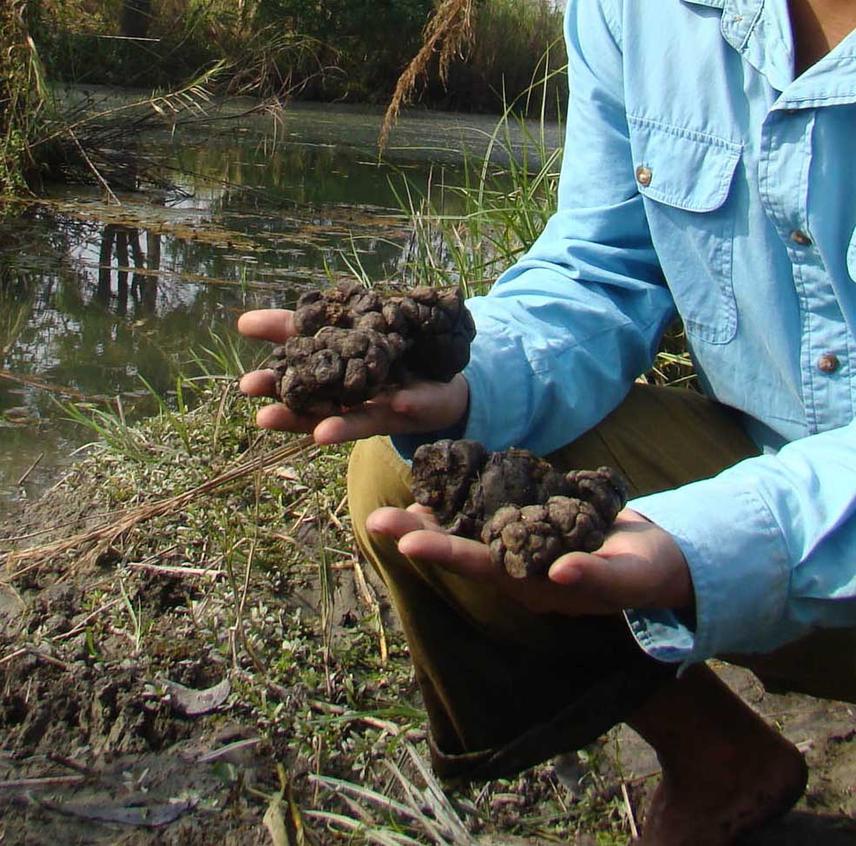Jyoti Das
Other projects
21 Sep 2012
Strengthening Swamp Deer Rucervus duvauceli Conservation in Manas National Park, Assam, India
The study primarily intends to assess the present status of swamp deer in Manas and re-introduction feasibility of the species in near future and formulating a quantitative strategy with risk assessment to prevent local extinction and achieve the objective of developing viable, self sustaining populations within the historic range in Manas.

The fresh swamp deer pellets at Chorphuli wetland.
The Swamp deer Cervus duvauceli is on the verge of locally extinct in Manas National Park, Assam. During the civil unrest period (1990-2000), the poachers almost wiped away the entire population from Manas. Hence, the present population in the Park constitutes a very small and declining fraction of the total population earlier which hangs around <20 (UNESCO REPORT, 2008). Hence there is an urgent need to monitor their actual status and other demographic factors associated with the species and the possibility of re-introduction.
As the species became almost locally extinct in Manas during last decade or so, the population at Kaziranga National Park has increased considerably due to better protection. There is enough scope for reintroducing individuals from Kaziranga as the protection has tightened up under the Indian Rhino Vision 2020 in Manas National Park recently; which will assist bringing back swamp deer population to a viable stage in their former range. The wild populations in Manas are in need policy and management schemes that can assure its genetic and demographic sustainability for the future. This can be achieved by re-introduction programs, providing animals without threatening their own genetic and demographic security. This study will essentially intend to diagnose the current status of swamp deer and a feasibility study of re-introduction in the Park; which will significantly benefit the managers and the policy makers to execute the probable re-introduction draft for the conservation of Cervus duvauceli ranjitsinhi gene pool in wild. The reintroduction of swamp deer will fill up the criteria to remove the Manas National Park from world heritage site in danger list.
The study gains added importance when viewed as a part of a long term process of re-introducing swamp deer populations to develop a viable, self sustaining populations within the historic range in Manas. The present estimate of swamp deer will serve as baseline estimates that will help track changes in swamp deer populations as disturbances are removed over a period of time now. If the proposed feasibility study supports swamp deer rehabilitation, this will provide conservationists and managers with invaluable insights into recovery of swamp deer populations within the Park. This will help to establish another population of Cervus duvauceli ranjitsinhi outside Kaziranga NP.